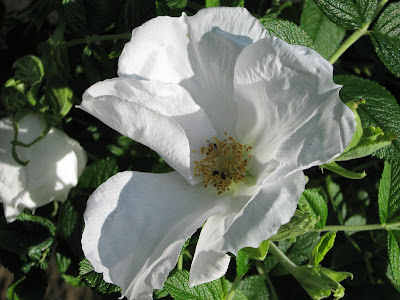
The experiment has officially begun! I have read nothing on growing sweet potatoes in containers. So, aside from what I know about growing them in general --- I'm on my own.
Sweet potatoes are grown from the "slips" or sprouts that appear after you've held onto them too long. I had a few potatoes from the winter, that had taken on lives of their own. Pre-sprouted, even. I also stuck a couple in jars, submerging the ends in water, held in place by toothpicks. Sounds a lot like the low-tech science experiments done in grade school, doesn't it?
When the slips are about 8" long, they are ready to be removed, with a twisting motion and planted. Another shortcut I have taken is to stick the slips in an organic potting medium, so that they can develop a good root system.
Apparently, sweet potatoes do well in a slightly acidic, loamy, sandy soil that is rich in organic matter. Too much nitrogen with produce rampant vines and distorted tubers. A cupful of organic liquid fertilizer per plant, rich in phosphorus will get them off to a good start. One specifically for transplanting should do the trick.
The sweet potato slips have to be kept well-watered to keep them from withering. Sweet potato plants need at least 1" of water per week. Then the amount of water can be decreased as maturity approaches, in order to keep the tubers from cracking.

















































